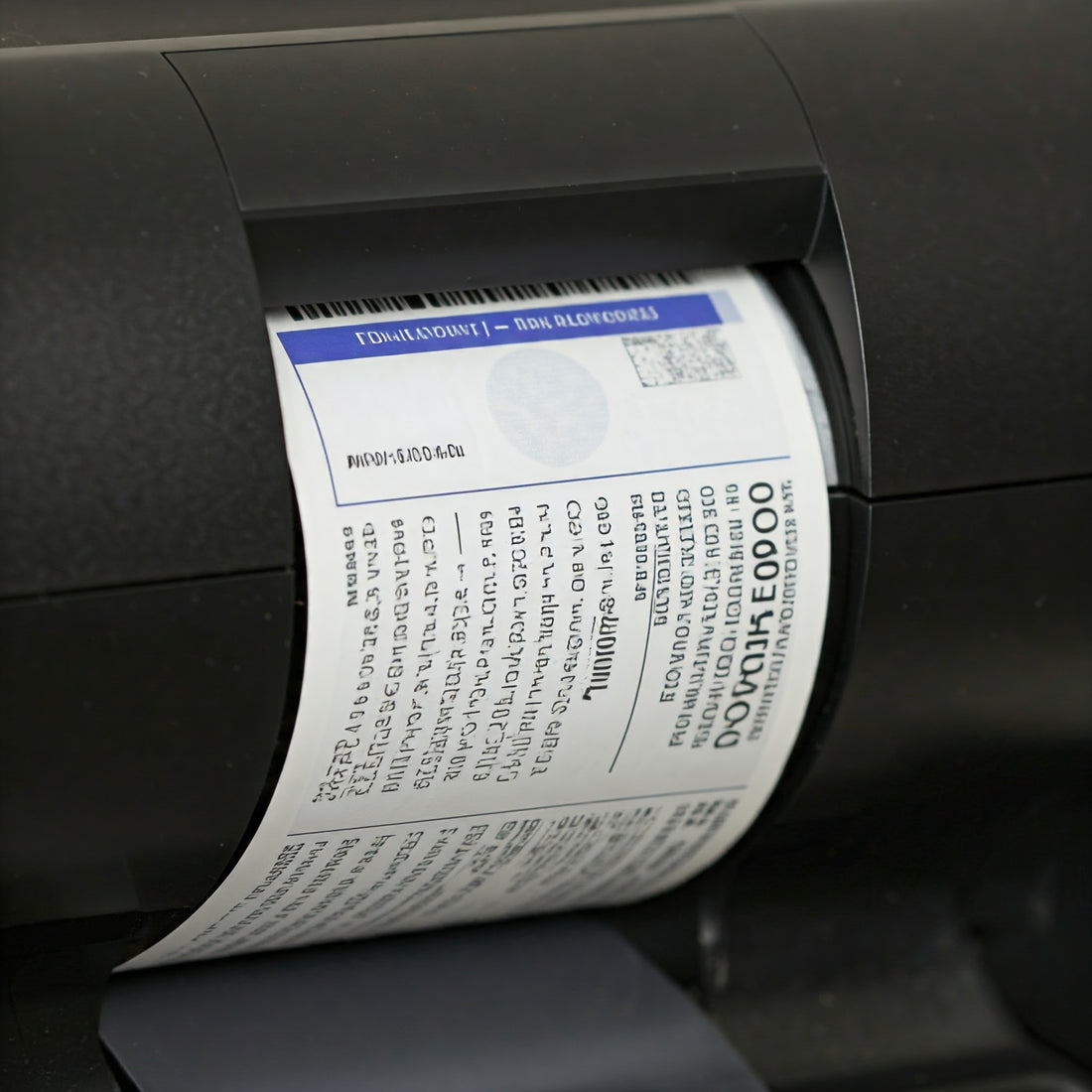Thermal transfer labels may seem pretty straightforward—you print on them, you stick them to something, and voilà! But, like most things in life, they need a little care to stay in top condition. It’s not rocket science, but proper storage can make a difference when it comes to maintaining the quality of your labels.
If you’ve ever pulled out a roll of labels only to find them curled up or damaged, you know what it means.
So, let’s dive into some simple, effective tips to keep your thermal transfer labels fresh and functional.

1. Store in a Cool, Dry Place
Let’s start with the basics. Thermal transfer labels, like most things, don’t do well in extreme conditions. Heat and humidity are their worst enemies, so the first rule of thumb is to store them in a cool, dry environment. Think of it as how you’d store your favorite snacks—they need to stay dry and away from the sun. Ideally, labels should be kept at a temperature between 40°F and 80°F (5°C to 26°C) with humidity levels between 30% and 50%.
Why does this matter? Well, high temperatures can cause the adhesive to break down, and humidity can make the labels stick together. In other words, your labels could become a sticky mess or lose their stickiness altogether. No one wants that.
2. Keep Them in Their Original Packaging
When you receive your labels, resist the temptation to take them out of their packaging right away. The original packaging is designed to protect them from dust, dirt, and moisture. If you don’t need to use them immediately, it’s best to leave them sealed up. Once opened, they’re more vulnerable to environmental factors.
Plus, if the labels are rolled, taking them out of the packaging early can cause them to lose their shape. Keep them neatly wrapped until you’re ready to load them into your printer.
3. Avoid Direct Sunlight
This one’s important. Just like how we need sunscreen to protect ourselves from UV rays, thermal transfer labels are sensitive to sunlight. Direct exposure can cause discoloration, fading, and even damage to the adhesive. If you’ve got a nice sunny window in your office, it’s probably not the best place to store your labels. Instead, opt for a cool, dark space like a cabinet or drawer.
Think of it like this: If you wouldn’t leave a chocolate bar there, don’t leave your labels there either. It’s the same idea—too much heat or light will ruin the quality.
4. Keep Labels Flat or Upright
Proper storage doesn’t just mean temperature control—it’s also about positioning. You’ll want to store thermal transfer labels either flat or upright, depending on how they’re packaged. For rolls, store them upright on their edges to prevent them from becoming deformed or damaged. For sheets, keep them flat to avoid bending or curling.
Remember, labels are meant to be flat when applied, so any wrapping or curling can make them harder to print on and even harder to apply smoothly.
5. Use the Labels Within a Year
Thermal transfer labels do have a shelf life, just like any product with an adhesive. While they won’t go bad overnight, it’s a good idea to use them within a year of purchase for the best results. Over time, the adhesive can weaken, and the print quality may suffer.
If you’ve had a pack of labels sitting in the back of a closet for a couple of years, it might be time to reevaluate whether they’re still usable. Labels that have aged past their prime can cause more trouble than they’re worth—like smudging, poor adhesion, or faded prints. In other words, don’t let them linger.
6. Avoid Exposure to Chemicals
Here’s one you might not think about: chemicals can wreak havoc on thermal transfer labels. Whether it’s cleaning products, solvents, or even strong perfumes (yep, really), these substances can degrade the adhesive and ruin the label’s print surface. So, keep your labels away from any chemicals, and make sure the area where you store them is clean and free of any harsh substances.
A good rule of thumb? If it smells strong, keep it away from your labels.
7. Rotate Your Stock
If you’re using thermal transfer labels regularly, it’s a smart idea to rotate your stock. Always use the oldest labels first to ensure you’re not letting them sit around too long. This way, you’ll avoid using labels that are past their prime, and you won’t waste any rolls or sheets that have been sitting around for too long.
It’s a little like using the oldest ingredients in your pantry first before opening new ones—it just makes sense and keeps things moving.
8. Keep Labels Away from Magnetic Fields
This tip may sound a bit odd, but magnetic fields can interfere with the sensitive materials used in thermal transfer labels. Things like magnets or devices that emit strong electromagnetic fields can cause problems with the label’s performance. So, keep your labels away from items like strong magnets, speakers, or any equipment that generates a magnetic field.
9. Check for Dust and Debris
Even the tiniest bits of dust or dirt can affect your label printing. Make sure to store your labels in a clean, dust-free environment. If they’ve been sitting out for a while, give them a quick wipe before loading them into your printer. This simple step can prevent a lot of headaches later on, like smudged prints or clogged printheads.
Final Thoughts
Taking care of your thermal transfer labels isn’t a difficult task, but it does require a little attention.
If you’re in need of high-quality thermal transfer labels or ribbons, check out our selection at 4x6Labels. We’ve got everything you need to keep your labeling process running smoothly.

